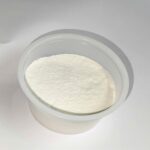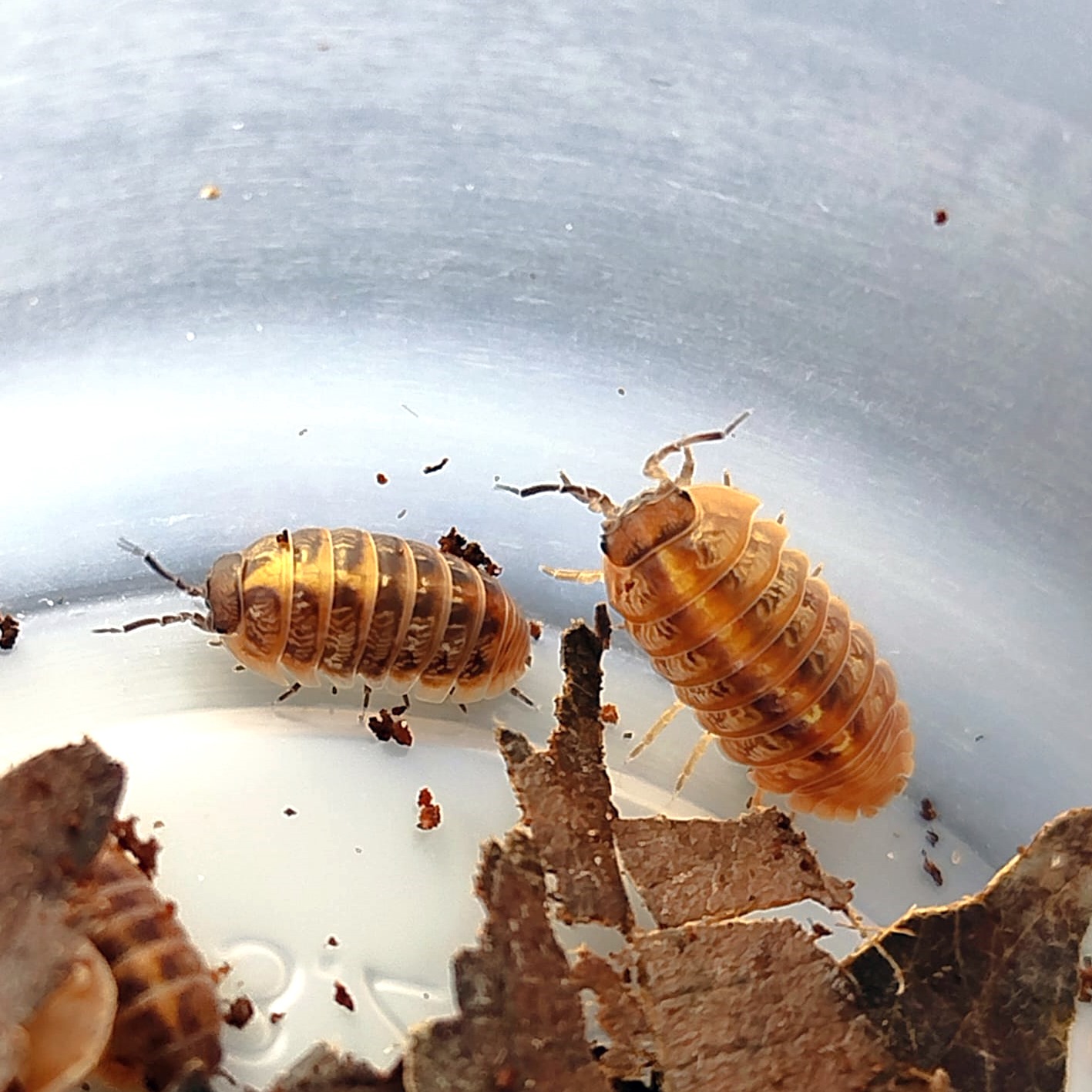
Cubaris sp. "White Side"
2,00€ – 8,00€Price range: 2,00€ through 8,00€

Food for springtails
2,00€
Armadillidium vulgare “Mocca”
1,50€ – 6,00€Price range: 1,50€ through 6,00€
Discover the fascinating Armadillidium vulgare “Mocca”: a unique chocolate brown isopod that not only beautifies your terrarium, but also helps maintain a healthy ecosystem. Perfect for hobbyists and nature lovers. Add one to your collection today!
SKU:
N/A
Categories: Armadillidium, Arthropods, Isopods
Description
Technical Data Sheet: Armadillidium vulgare “Mocca”
Common Name: Pill bug, roly-poly, woodlouse, isopod “Mocca”
Scientific Name: Armadillidium vulgare “Mocca”
Taxonomic Classification:
- Kingdom: Animalia
- Phylum: Arthropoda
- Class: Malacostraca
- Order: Isopoda
- Family: Armadillidiidae
- Genus: Armadillidium
- Species: A. vulgare
- Variety: “Mocca”
Physical Description:
- Color: Characteristic chocolate brown (“mocca”) color.
- Size: Between 8 and 18 mm in length.
- Shape: Oval and convex with the ability to roll into a perfect ball as a defense mechanism (volvulation).
- Antennae: Two pairs of antennae, with the second pair being longer and more prominent.
- Legs: Seven pairs of legs.
Habitat:
- Distribution: Widely distributed worldwide, especially in temperate regions.
- Environment: Moist soils rich in organic matter, under stones, logs, and fallen leaves.
Behavior:
- Diet: Detritivore, feeding on decomposing organic matter such as dead leaves and rotten wood.
- Activity: Nocturnal, seeking humid conditions to avoid desiccation.
Life Cycle:
- Reproduction: Oviparous. Females carry the eggs in a ventral pouch until the young hatch.
- Development: Undergoes several molts before reaching maturity. The full life cycle can last from 1 to 3 years, depending on environmental conditions.
Adaptations:
- Defense: Ability to roll into a ball to protect against predators.
- Respiration: Adaptations to breathe in humid environments through pseudotracheae (specialized respiratory structures).
Ecological Importance:
- Decomposition: Plays a crucial role in the decomposition and recycling of organic matter, contributing to fertile soil formation.
- Soil Health Indicator: Its presence indicates a healthy and well-balanced soil in terms of humidity and organic matter.
Care in Captivity:
- Terrarium: Maintain in a humid environment with suitable substrate such as garden soil mixed with leaves and decomposing wood.
- Humidity: High, around 70-90%.
- Temperature: Ideally between 18-24°C.
- Diet: Decomposing plant material, occasionally supplemented with fresh vegetables.
Interesting Facts:
- Name: “Armadillidium” refers to its ability to roll up like an armadillo.
- Behavior: Despite being terrestrial, they descend from marine crustaceans and retain certain physiological characteristics of these ancestors.
Additional information
| Options |
1 unit ,5 units |
|---|
Related products
Creobroter gemmatus
10,00€ – 25,00€Price range: 10,00€ through 25,00€
Sold out
Descobreix el fascinant món de la Jewel Mantis: una criatura exòtica i enigmàtica que et convida a explorar el seu comportament únic. Submergeix-te en l'estudi del seu camuflatge, la seva agilitat en la caça i la seva bellesa captivadora. Una experiència que desperta la curiositat i et connecta amb la natura d'una manera inspiradora!
Select options
This product has multiple variants. The options may be chosen on the product page
Caribena versicolor
26,00€ – 120,00€Price range: 26,00€ through 120,00€
Sold out
Discover the charming Caribbean versicolor tarantula for your terrarium. With its beautiful coloration, it is a perfect addition for any spider fan. We recommend having previous experience with tarantulas or arachnids in general. Bring beauty and fascination to your space with this captivating species.
Select options
This product has multiple variants. The options may be chosen on the product page
Pseudoglomeris Magnifica
8,00€ – 60,00€Price range: 8,00€ through 60,00€
Sold out
Discover the stunning Emerald Cockroach (Pseudoglomeris Magnifica), its vibrant green color and unique presence make it a fascinating addition to any environment! Get yours now!
Select options
This product has multiple variants. The options may be chosen on the product page
Blaptica Dubia
1,99€ – 9,00€Price range: 1,99€ through 9,00€
there is stock
Blaptica dubia. (live food)
Discover this fantastic food loaded with protein, ideal for ant colonies. An ideal power source to have an entire colony of ants active. This live food is ideal for feeding certain insects, reptiles, amphibians.
Select options
This product has multiple variants. The options may be chosen on the product page
Stick insect (Medauroidea extradentata)
5,00€
Sold out
Common name: Stick insect Scientific name: Medauroidea extradentata Taxonomic classification: Kingdom: Animalia Phylum: Arthropoda Class: Insecta Order: Phasmatodea Family: Phasmatidae
Select options
This product has multiple variants. The options may be chosen on the product page
Achrioptera manga (fallax)
8,00€
Sold out
Armadillidium vulgare magic potion
3,00€ – 12,50€Price range: 3,00€ through 12,50€
there is stock
Select options
This product has multiple variants. The options may be chosen on the product page
Armadillidium maculatum
2,50€ – 10,00€Price range: 2,50€ through 10,00€
there is stock
Select options
This product has multiple variants. The options may be chosen on the product page
























